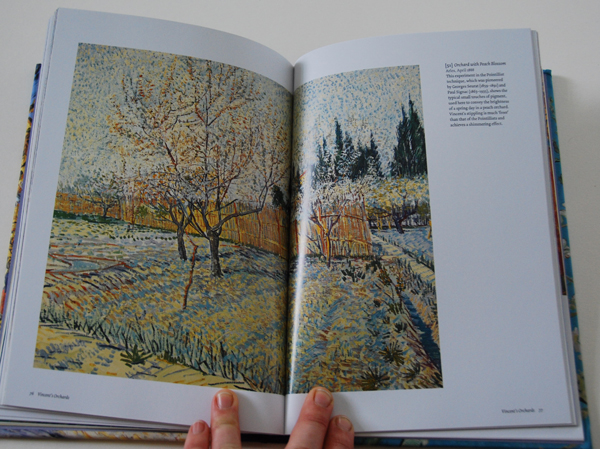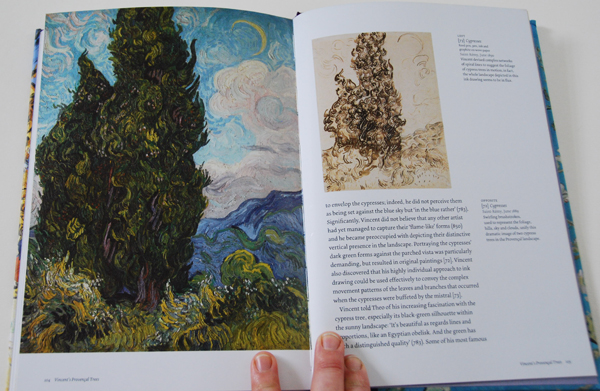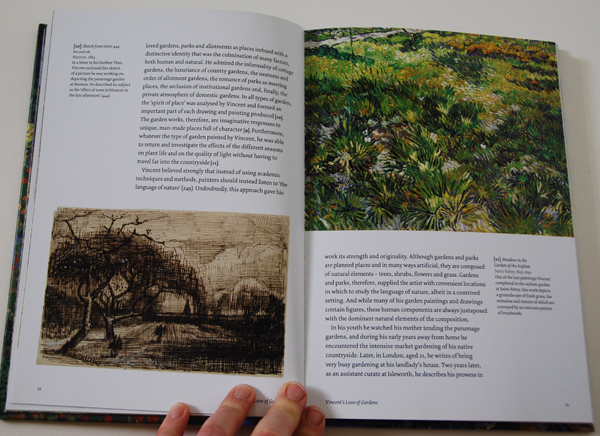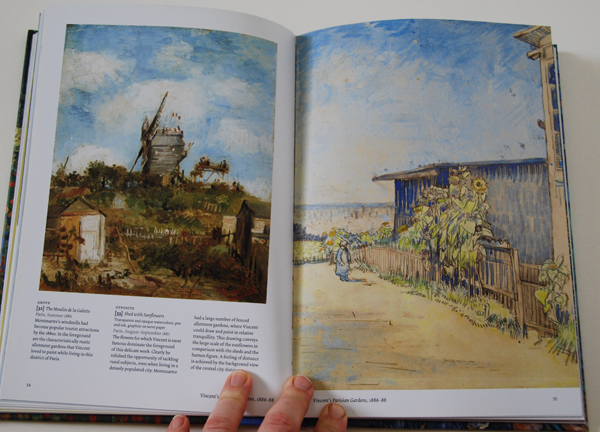Vincent's Trees and Vincent's Gardens by Ralph Skea
If you are a Facebook friend, you may have noticed all the Van Gogh paintings I have been sharing on my feed. This is because I have become fascinated with Van Gogh’s mark making ever since I was commissioned to copy the painting of Roses by Vincent Van Gogh at the NGA.
Being primarily an artist that favors a highly rendered finish with a lot of emphasis on the nuanced transitions in my own work, I get mesmerized by the thick and choppy paint handling Van Gogh favored. I am boggled by his ability to express three dimensional form with stark transitions and minimal modeling. As a result, I have been devouring his work lately, online and in books.
So I was especially happy to stumble upon these two books on his paintings of gardens and trees at the NGA bookstore.
Vincent's Trees

 In Vincent's Trees: Paintings and Drawings by Van Gogh
In Vincent's Trees: Paintings and Drawings by Van Gogh
 By emphasizing the diminishing size of the trees, he was quickly able to convey a sense of distance.
By emphasizing the diminishing size of the trees, he was quickly able to convey a sense of distance.
 It was in this book that I also realized how throughout his career he would paint orchards. They are a reoccurring theme in his work. In the Dutch Trees section, I feel as if there is an overpowering sense of loneliness while in his paintings from Provence, the trees seem to always be flowering, like this painting above. There is a whimsy in the Provencal trees that the Dutch trees lack.
It was in this book that I also realized how throughout his career he would paint orchards. They are a reoccurring theme in his work. In the Dutch Trees section, I feel as if there is an overpowering sense of loneliness while in his paintings from Provence, the trees seem to always be flowering, like this painting above. There is a whimsy in the Provencal trees that the Dutch trees lack.
 Because I am fascinated with how Van Gogh interpreted the world around him, I especially appreciate the examples that show how he would capture the scene in a pen and ink drawing and then go on to paint it with oil. He kept the hatchmarks in the drawings as much as he did in his paintings.
Because I am fascinated with how Van Gogh interpreted the world around him, I especially appreciate the examples that show how he would capture the scene in a pen and ink drawing and then go on to paint it with oil. He kept the hatchmarks in the drawings as much as he did in his paintings.
 Until getting this book on his depictions of trees, I never realized how he well he used them to frame and define the center of interest in his work. His skies will always be remembered, but he often framed or emphasized the sky by trees that were included into his work.
Until getting this book on his depictions of trees, I never realized how he well he used them to frame and define the center of interest in his work. His skies will always be remembered, but he often framed or emphasized the sky by trees that were included into his work.
 In the book, Vincent's Gardens: Paintings and Drawings by Van Gogh
In the book, Vincent's Gardens: Paintings and Drawings by Van Gogh
 To me his ability to draw and paint are fascinating. I am riveted how he is able to make a meadow of different grasses so interesting.
To me his ability to draw and paint are fascinating. I am riveted how he is able to make a meadow of different grasses so interesting.
 Whether Van Gogh was working with oils, watercolors, or pen and ink, the interest he had in growing plants is evident.
Whether Van Gogh was working with oils, watercolors, or pen and ink, the interest he had in growing plants is evident.
 This pen and ink drawing of a fountain has got to be my most favorite drawing of his in these two books, I am enthralled by his use of contour and hatch marks to convey the stone basin, the craggy feeling of the trees and their bark, and then how he uses watered down ink to draw in the background structures.
This pen and ink drawing of a fountain has got to be my most favorite drawing of his in these two books, I am enthralled by his use of contour and hatch marks to convey the stone basin, the craggy feeling of the trees and their bark, and then how he uses watered down ink to draw in the background structures.
Both books are full of eye candy and inspiration.
Vincent's Trees: Paintings and Drawings by Van Gogh


